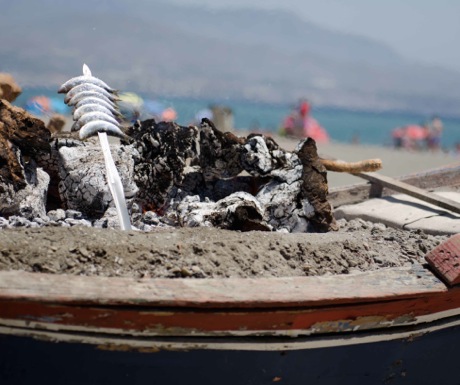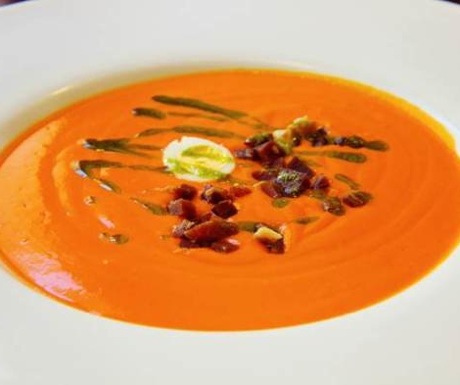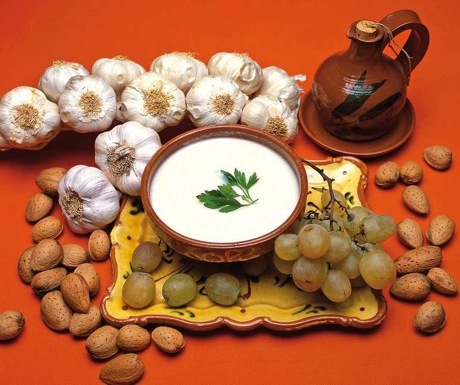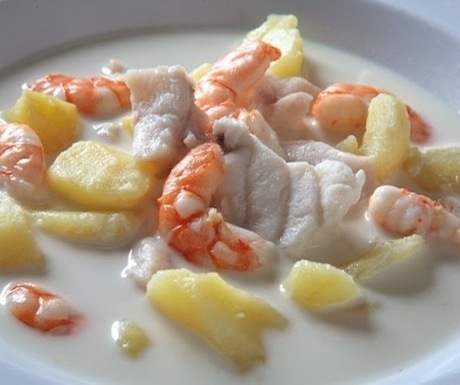Andalucian cuisine presents a tantalising array of flavours rooted in historical influences introduced by the Phoenicians, Romans, Islamic Moors, Jews and Christians amongst others. All is based on the freshest of local ingredients and here you find the finest fresh seafood, wild game and fowl, and an abundance of exotic spices such as saffron and all variety of paprika powder.
Each of the Andalucian provinces lay claim to various original dishes and, naturally, there is some overlap between them. However, there still remains a surprising level of preservation and pride behind many historical, regional foods.
Malaga is no exception. The city and surrounding province boast numerous distinctive specialties that would be difficult to miss with even a short stay, and would leave any visitor lacking if not sampled. Even the humble almond has been elevated to renown status in Malaga, a requisite staple served in virtually every restaurant and bar, and often best experienced roasted and salted in paper cones on the street.
Beyond almonds and the ubiquitous olives, here are some typical and unique plates from Malaga that must be experienced to be understood, and simply must be experienced!
1. Espeto de Sardinas
Sardines cooked in the espeto style is one of the most typical dishes youll find along the Malaga coast. Dotting the beaches at regular intervals are cozy little beach bars serving fresh seafood and cold libations; each will have a small, old fishing boat with a wood fire burning within. All variety of fish and seafood will be cooked over the open fire, skewered on bamboo stakes as has been done for centuries. However, the sardines are the most prized and popular of the espeto dishes. Best eaten with your fingers and a drizzle of lemon while the Mediterranean reflects the sun above and plays along the beach before you.

Best place to sample: Virtually every chringuito beach bar along the coast has a respectableoffering. Try those in El Palo (East Malaga), Rincon de la Victoria, or for a more gourmet taste, the hilltop restaurant El Refectorium Campanario.
2. Porra Antequerana
While most people may be familiar with Gazpacho, porra is perhaps lesser known but even more delicious. A soup similarly served cold, porra is a much thicker emulsion simply created with bread crumbs, olive oil, vinegar and seasoning. It predates the introduction of tomatoes into European cooking, but today the best loved version of porra is very much the tomato based soup. The city of Antequera claims this recipe as its own, but the Moors who first invented it would never serve it with chunks of cured ham as it is today; the quail egg, perhaps. On a hot summer day with inland temperatures of 40C (100F), this may be all it takes to satisfy.

Best place to sample: in Antequera, obviously! The restaurant Arte de Cozina in Antequera makes a valiant effort to preserve the typical dishes of antiquity and is the perfect place for these explorations. It is the only place serving not just the modern classic tomato version, but also the original tomato-free version and another pre-tomato version made with orange; plus, they proudly present the recipes for you to try at home!
3. Ajo Blanco
Another of the traditional and refreshing cold soups in this land of sweltering sun, ajo blanco is one of the more localised and unique dishes heralding from the agricultural region known as La Axarquia in eastern Malaga Province. Literally translating as white garlic soup, it is another legacy of the Moors, incorporating more almond than garlic to create its unmistakably milky appearance. Served with the equally abundant, sweet Moscatel grapes of the area, the soup takes on an exquisite and delicate sweetness tempered by the underlying subtlety of raw garlic.

Best place to sample: The Axarquian village of Almachar holds an annual festival each year to celebrate and serve tonnes of homemade ajo blanco. There you will always find a bar or restaurant serving a fine version of the stuff. Other nearby villages such as Moclinejo or Benamargosa will also serve a tasty bowl full, while in Malaga you might find more refined versions in upscale restaurants around the old centre of the city.
4. Ensalada Malaguea
This Malaga style salad is unique enough to bear the name of the city itself. It incorporates the salt-cod so prominent across the Iberian Peninsula, but mixes uniquely with potatoes, orange slices, olives and red onion on a basic level, dressed with sherry vinegar and extra virgin olive oil. There are many more modern variations with added citrus, shrimp oradditional seafood andalternative dressings or ingredients; however, this dish in all its forms remains a staple for family gatherings and is still served in many fine dining establishments, always highlighting the best of the healthy Mediterranean diet.

Best place to sample: In the city of Malaga, for example, in El Pimpi, popular with tourists and celebrities alike, or in El Trillo off of the central shopping street, Calle Larios.
5. Gazpachuelo Malagueo
Originally a peasant dish designed to make the best use of scarce fish and other basics from the larder, it now often includes nicer bits of langoustines, clams and other fine seafood. Add to the seafood some potatoes and create a thin, but richfish stock seasoned with salt and sherry vinegar. The milky appearance derives from the inclusion of mayonnaise in the stock. Unlike the many cold soups so prevalent in Malaga Province, this one is in fact a warm soup more typically eaten in winter.

Best place to sample: El Refectorium in la Malagueta, between the bull ring and the sea, is perhaps the best place for fish and seafood in the city. As a starter their gazpachuelo is divine, just the right balance of ingredients.
Such is the uniqueness and diversity of the historic food culture of Malaga city and the surrounding province, its difficult to condense into a short list. There is still the fritura Malaguea, a special selection of locally caught fish battered more lightly than tempura and fried in olive oil served up and down the coast; or, the chivo de Canillas, regionally famed roast kid of the race of goat specific to Malaga, served in the mountain village of Canillas de Aceituno. Both deserve special mention.
All of this and more, you simply must visit to sample and experience. Don’t forget to follow it all with that most typical and famous swillproduced in the area, a deliciously sweet Moscatel wine.